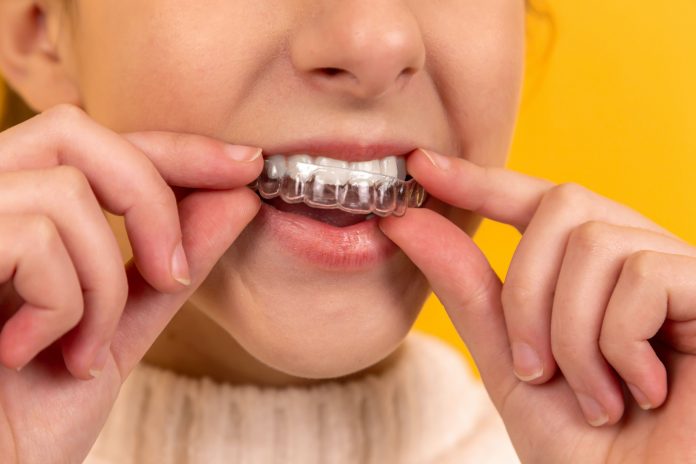The desire to whiten teeth has existed for over a century, with hydrogen peroxide being the go-to whitening agent.1
In cosmetic dentistry, teeth whitening is one of the most popular practices.1 Hydrogen peroxide is used in dental offices to give patients with a whiter smile.
Still, there are those taking matters into their own hands at home.1
Since the introduction of at-home tooth whitening kits, concerns regarding their safety have been raised.1
Is at-home teeth whitening with hydrogen peroxide actually safe?
What is hydrogen peroxide?
Hydrogen peroxide (H202) is a liquid with no taste, odour, or colour2 It has one more oxygen atom than water, which is a property that makes it unstable and dangerous if ingested.2
Hydrogen peroxide works by oxidizing the stains on teeth or simply breaking down the staining molecules to be removed.
Because H202 is a great oxidizer, there are risks if the teeth whitening formula is not the right concentration and too much hydrogen peroxide is ingested.2
The symptoms of ingesting too much hydrogen peroxide include:
- upset stomach,
- vomiting,
- throat irritation,
- stomach irritation,
- and tissue burns.2
Additionally, suppose very high levels of hydrogen peroxide are ingested.
In that case, there could be severe toxic effects that lead to blood poisoning, the destruction of tissues, stroke or degenerative disease.2
Teeth whitening at the dentist’s office vs at home
Hydrogen peroxide can be found in concentrations of 25% to 40% at dental offices and 3% to 15% for at-home use to whiten teeth.2
When used by dental professionals, hydrogen peroxide is not associated with significant safety concerns.2
The safety assurance is because the gums are protected using barriers, and the hydrogen peroxide is in a gel form that is thoroughly removed after treatment.2
Individuals may choose to whiten their teeth at home for the sake of convenience or cost.2
This process typically involves applying a hydrogen peroxide gel to the surface of teeth (the enamel), typically in a mouth guard that is worn overnight.2
To prevent the risk of mild to severe symptoms like stomach irritation, at-home formulations generally do not exceed a concentration of 15% hydrogen peroxide.2
Given the ease of use and low cost, at-home whitening may be an appealing option.2
But, what if too much of the gel is swallowed overnight, the mouth guard falls out, or the product is not used correctly?
The importance of following instructions
When hydrogen peroxide for teeth is not used correctly, tooth sensitivity and gum irritation often occur lasting for several days.2
Damage to the enamel may also happen if high concentrations of hydrogen peroxide are used or if the gel is left on the teeth longer than the recommended time.2
Other risks of at-home teeth whitening
Besides damage to teeth and gums, there is a greater chance of swallowing hydrogen peroxide during at-home whitening.2
An estimated 10% of the applied product is accidentally ingested.2 Fortunately, if instructions are followed, there is no significant harm associated with hydrogen peroxide exposure.2
The product use recommendations for safety should be adhered to so the body’s natural mechanisms, like enzymes found in saliva, can sufficiently degrade the hydrogen peroxide.2
Minimizing risks and maximizing benefits
Research indicates that whitening teeth using hydrogen peroxide is relatively safe.2
Performing teeth whitening at home is an easy and cost-effective way to obtain a whiter smile, but only if the instructions are followed.2
Even if precautions are taken, experiencing tooth sensitivity and gum irritation may occur.2 To minimize the risks and maximize the benefits of teeth whitening, this treatment should be performed by a dental professional.
References
- Li Y, Greenwall L. Safety issues of tooth whitening using peroxide-based materials. Bri Dent J. 2013;215(1):29-34. https://doi.org/10.1038/sj.bdj.2013.629
- Hydrogen peroxide: How to prevent and treat unintentional poisonings. National Capital Poison Center. Accessed January 19, 2023. https://www.poison.org/articles/hydrogen-peroxide



